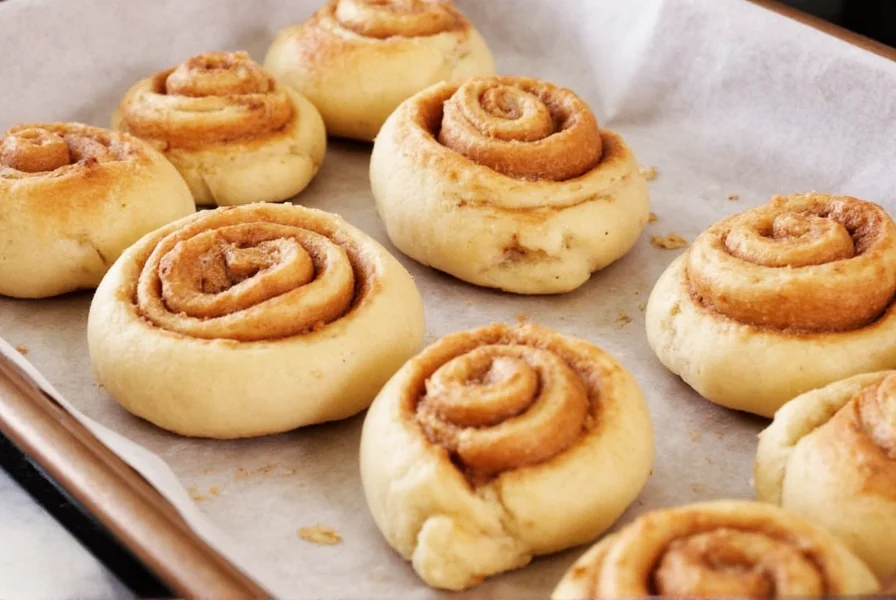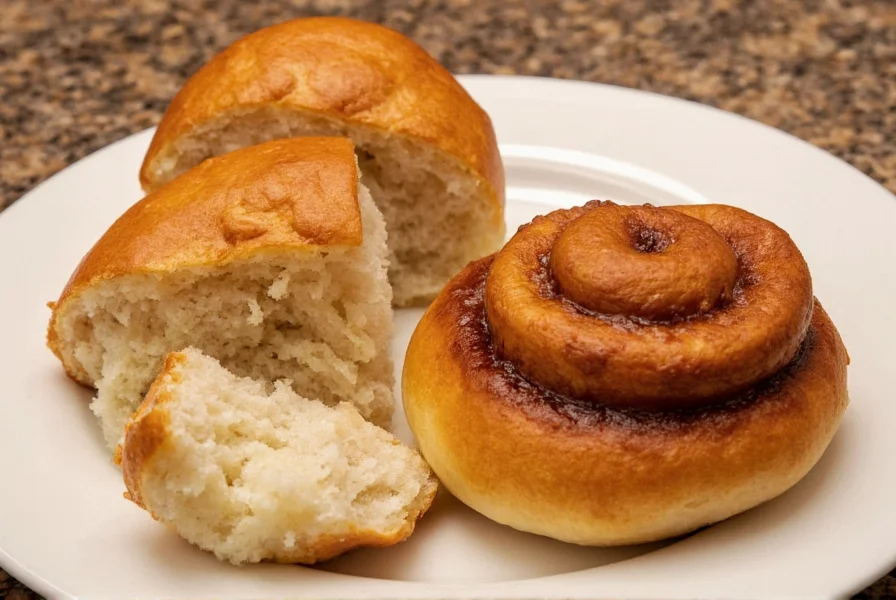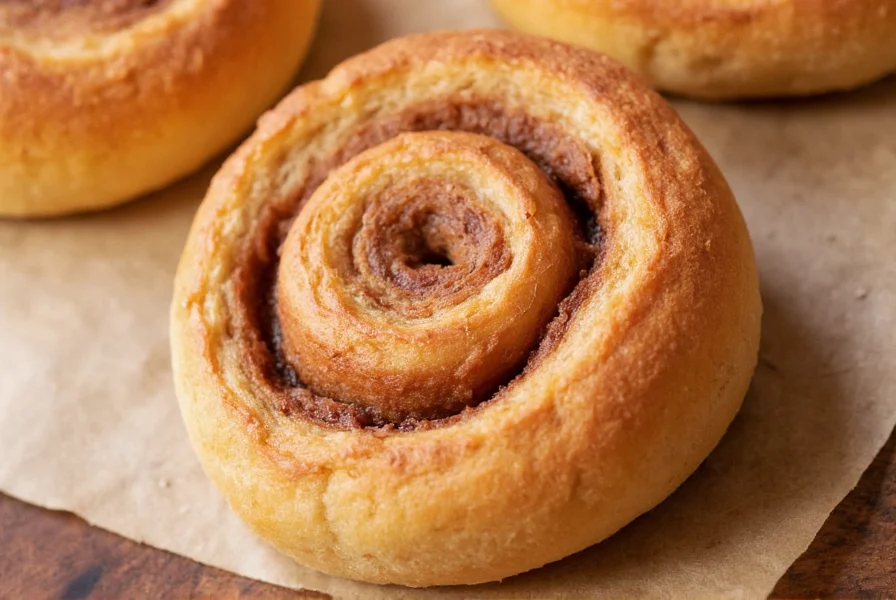When bakers and pastry chefs describe a cinnamon roll as "legendary," they're referring to a precise harmony of texture, flavor balance, and technical execution that transforms this humble pastry into something extraordinary. Unlike ordinary cinnamon rolls that might be overly sweet, dense, or one-dimensional in flavor, legendary versions demonstrate mastery of fundamental baking principles combined with thoughtful ingredient selection.
The Science Behind Legendary Cinnamon Roll Dough
Professional bakers emphasize that the foundation of any legendary cinnamon roll begins with the dough. The ideal dough requires careful attention to yeast management and proper gluten development. Many home bakers make the critical mistake of using too much flour during kneading, which creates a dense final product. Instead, legendary rolls use a slightly sticky dough with 65-70% hydration that allows for proper oven spring.
Temperature control during fermentation proves equally crucial. The optimal second rise occurs at 75-78°F (24-26°C) for 90-120 minutes. This specific temperature range allows yeast to produce ideal flavor compounds without over-acidifying the dough. Rushing this process by placing dough in a warmer environment creates rolls that lack the complex flavor profile characteristic of legendary versions.

Mastering the Filling: Beyond Basic Cinnamon Sugar
The filling represents where most cinnamon rolls fail to achieve legendary status. While many recipes call simply for "cinnamon and sugar," the truly exceptional versions incorporate several nuanced elements:
| Ingredient | Legendary Roll Approach | Common Mistake |
|---|---|---|
| Cinnamon | High-quality Saigon or Korintje with 5-7% essential oil content | Using old, low-oil-content cinnamon |
| Sugar | Blend of light brown sugar (80%) and granulated (20%) | 100% granulated sugar |
| Butter | European-style (82-84% fat) at precise 65°F (18°C) | Melted or too-soft butter |
| Additional Elements | Pinch of cardamom, pinch of salt, teaspoon of vanilla extract | None |
Professional pastry chefs spread the butter at a precise temperature—cool enough to stay in place but soft enough to spread without tearing the dough. The sugar mixture then gets evenly distributed before rolling, creating distinct layers that separate beautifully when baked. This layering technique, often called "laminating," creates the signature pull-apart quality of legendary cinnamon rolls.
The Icing Equation: Balance Over Sweetness
Many cinnamon rolls fail at the final hurdle: the icing. Truly legendary versions feature an icing with a 3:2 ratio of powdered sugar to cream cheese, with just enough milk to achieve a silky consistency that coats but doesn't drown the roll. The critical factor professional bakers emphasize is temperature—both the rolls and icing should be at room temperature when combined.
"Hot rolls melt the icing into a sugary puddle, while cold rolls make it seize up," explains Maria Chen, head pastry chef at a renowned bakery. "The perfect window is when the rolls have cooled for exactly 15 minutes after baking—warm enough to let the icing melt slightly into the top layer, but not so hot that it runs off."
Common Pitfalls That Prevent Legendary Status
Even experienced home bakers frequently make these critical errors that prevent their cinnamon rolls from achieving legendary status:
- Overfilling with cinnamon - creates a bitter, medicinal flavor rather than warm spice
- Rolling too tightly - compresses the dough, preventing proper oven spring and layer separation
- Incorrect oven temperature - baking below 350°F (177°C) prevents proper caramelization of the filling
- Under-proofing - results in dense, chewy texture instead of light, airy crumb
- Using low-fat cream cheese - creates a watery, unstable icing that separates
Professional Techniques for Home Bakers
Adapting professional techniques can elevate home-baked cinnamon rolls to legendary status. The "overnight retard" method involves preparing the rolls, placing them in the pan, then refrigerating for 12-18 hours before baking. This slow fermentation develops complex flavors while making morning baking as simple as removing the pan from the refrigerator and allowing it to come to temperature.
Another pro technique involves using a digital thermometer to verify dough temperature after mixing—ideally between 75-78°F (24-26°C). This precision ensures consistent results regardless of kitchen temperature fluctuations. For the filling, many professional bakers create a "cinnamon paste" by mixing softened butter, sugar, and cinnamon until completely smooth before spreading, which prevents clumping and ensures even distribution.

Historical Context: How Cinnamon Rolls Became Iconic
While cinnamon rolls trace their origins to Swedish "kanelbulle," the American version evolved significantly after Scandinavian immigrants brought the recipe in the 19th century. The "legendary" status emerged in the 1980s when gourmet bakeries began elevating the humble pastry with premium ingredients and refined techniques. Understanding this evolution helps explain why certain elements—like the perfect balance of spice to sweetness—became markers of exceptional quality.
Troubleshooting Your Cinnamon Roll Results
When your cinnamon rolls miss the legendary mark, these targeted fixes can rescue your batch:
- Dense texture - Increase hydration by 5% and ensure proper second rise (dough should nearly double)
- Filling leaking out - Chill rolled dough for 15 minutes before slicing to set the butter
- Bland cinnamon flavor - Toast whole cinnamon sticks then grind fresh for filling
- Soggy bottom - Place baking pan on a preheated baking sheet for better bottom crust
- Icing too sweet - Add a pinch of sea salt and 1/4 teaspoon lemon zest to icing
Master bakers agree that achieving legendary cinnamon roll status requires attention to detail at every stage—from ingredient selection through final presentation. The most memorable versions create a multisensory experience where aroma, texture, temperature, and flavor balance work in perfect harmony. By understanding and implementing these professional techniques and principles, home bakers can consistently produce cinnamon rolls worthy of the "legendary" designation.
Frequently Asked Questions
What is the ideal cinnamon to sugar ratio for legendary cinnamon rolls?
The ideal ratio is 2 tablespoons of high-quality cinnamon (Saigon or Korintje) to 1 cup of sugar, with 80% light brown sugar and 20% granulated sugar. This balance provides sufficient cinnamon flavor without bitterness while allowing proper caramelization during baking.
Why do my homemade cinnamon rolls never achieve that perfect pull-apart texture?
The pull-apart texture comes from proper lamination and dough handling. Key factors include: using slightly sticky dough (not adding excess flour), spreading filling at precise butter temperature (65°F/18°C), rolling gently without compressing the dough, and ensuring proper second rise (dough should nearly double in size before baking).
How can I make my cinnamon roll icing less sweet while maintaining texture?
To reduce sweetness while keeping ideal texture, use a 3:2 ratio of powdered sugar to full-fat cream cheese, add a pinch of sea salt, and incorporate 1/4 teaspoon of lemon zest. Apply the icing when rolls have cooled for exactly 15 minutes after baking for perfect absorption without becoming overly sweet.
What's the most common mistake that prevents cinnamon rolls from becoming legendary?
The most common mistake is improper dough temperature management during fermentation. Many home bakers rush the second rise by placing dough in a warm environment, which creates rolls lacking complex flavor. The ideal second rise occurs at 75-78°F (24-26°C) for 90-120 minutes, allowing proper flavor development without over-acidifying the dough.











 浙公网安备
33010002000092号
浙公网安备
33010002000092号 浙B2-20120091-4
浙B2-20120091-4